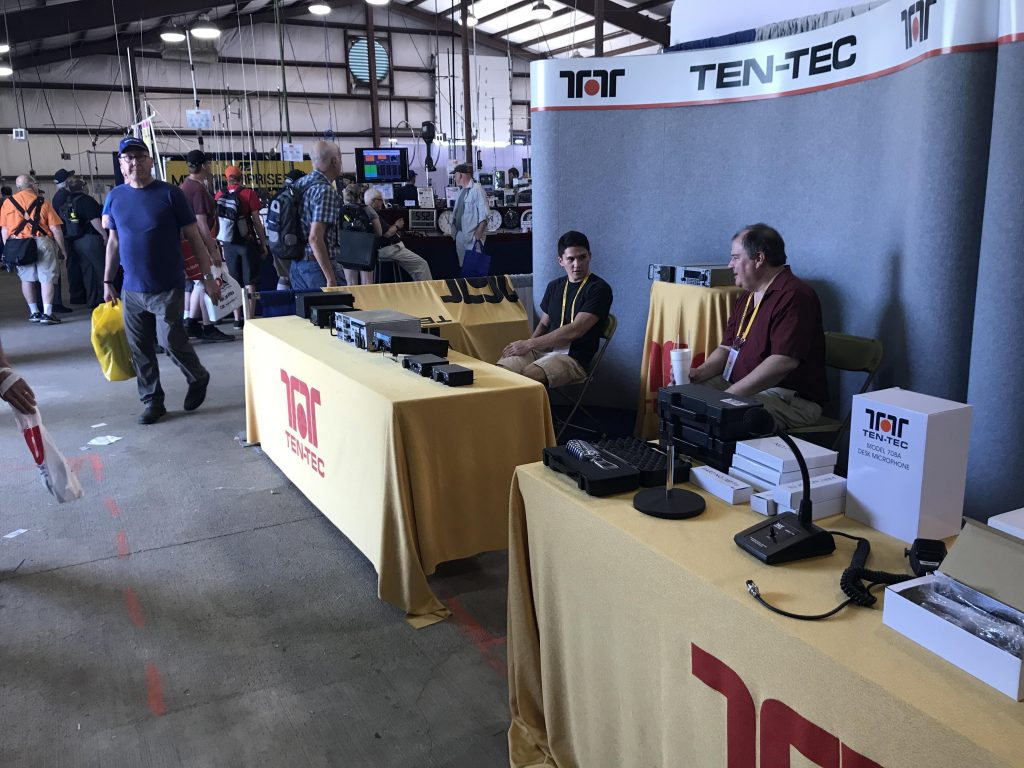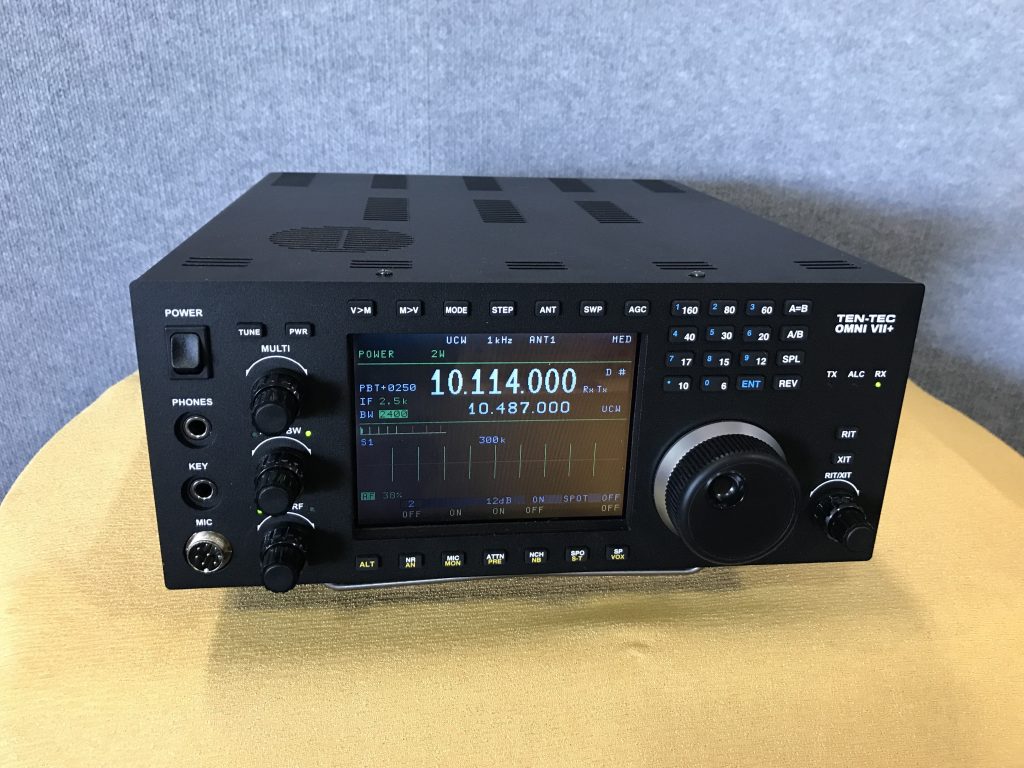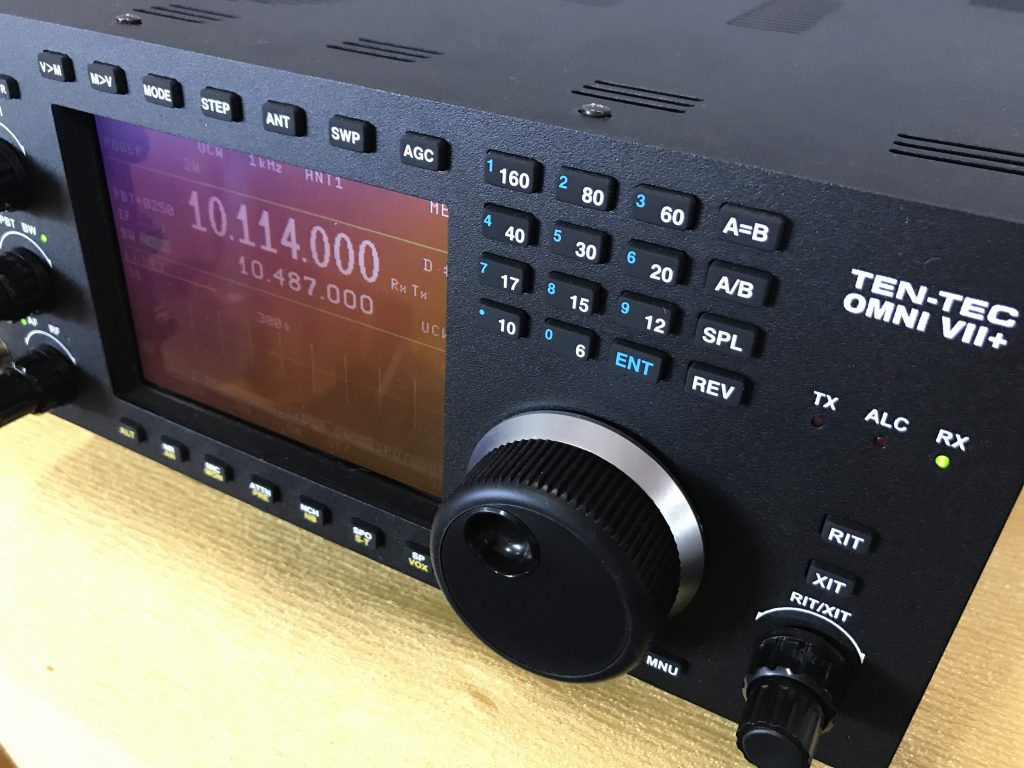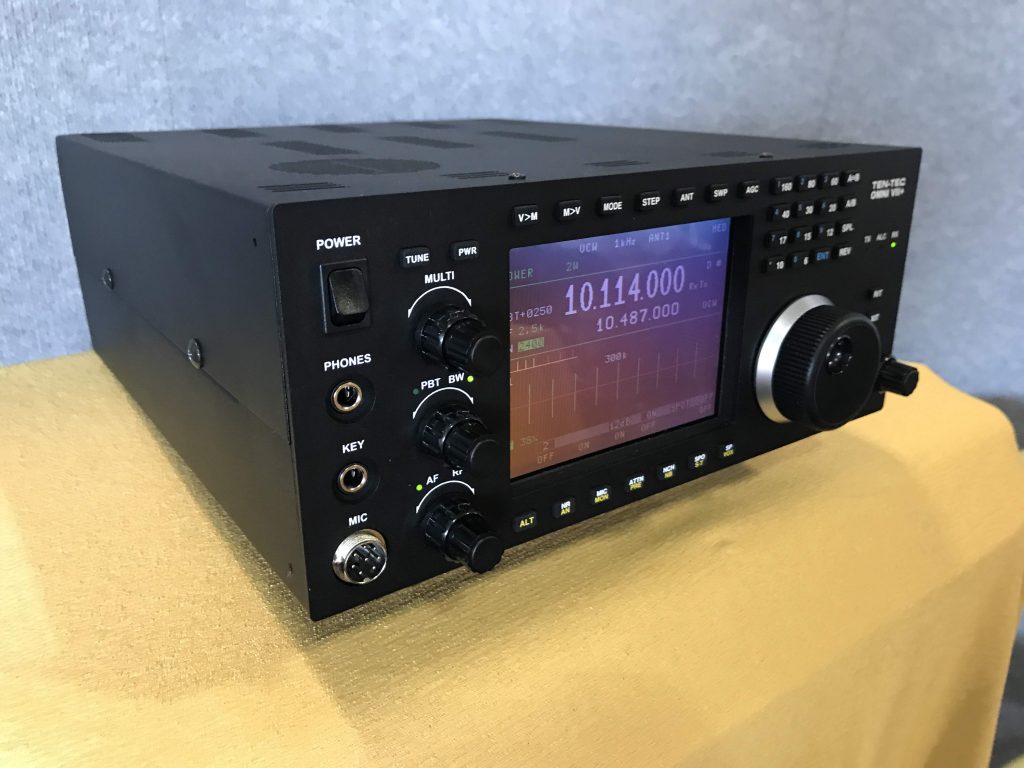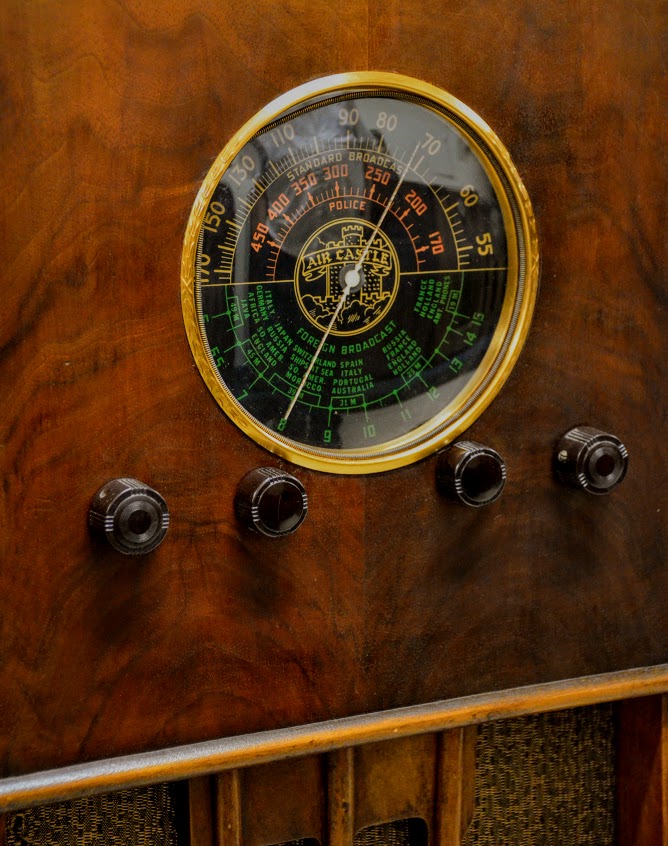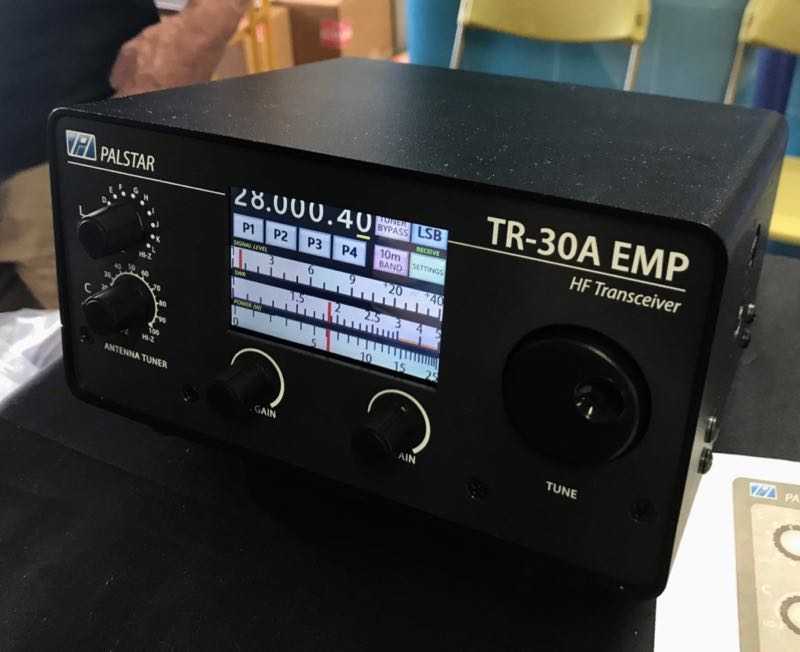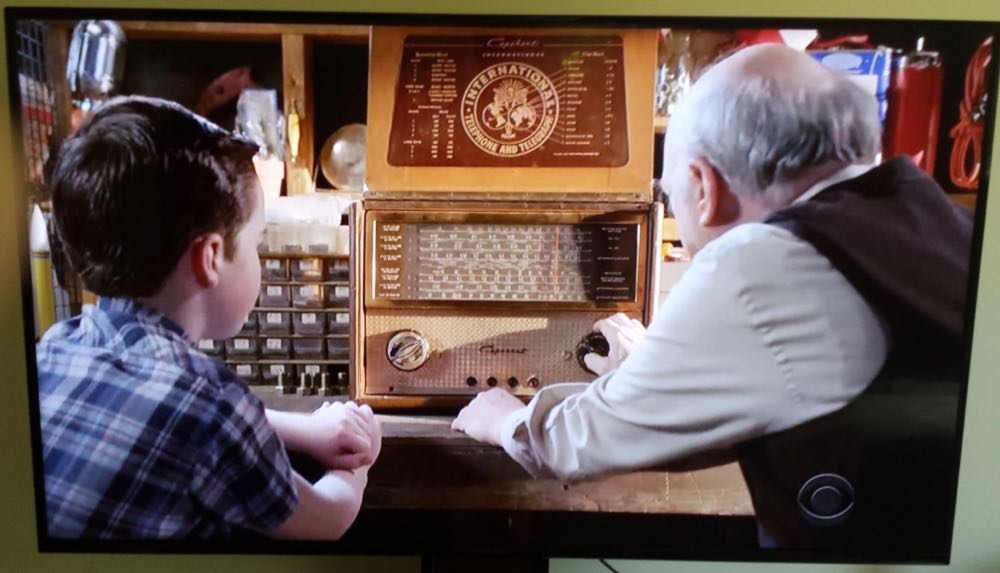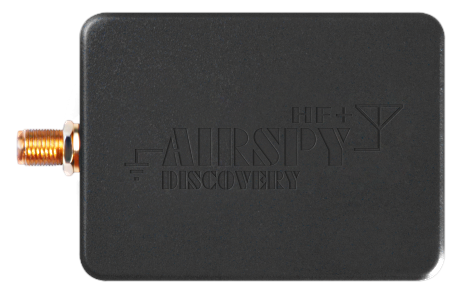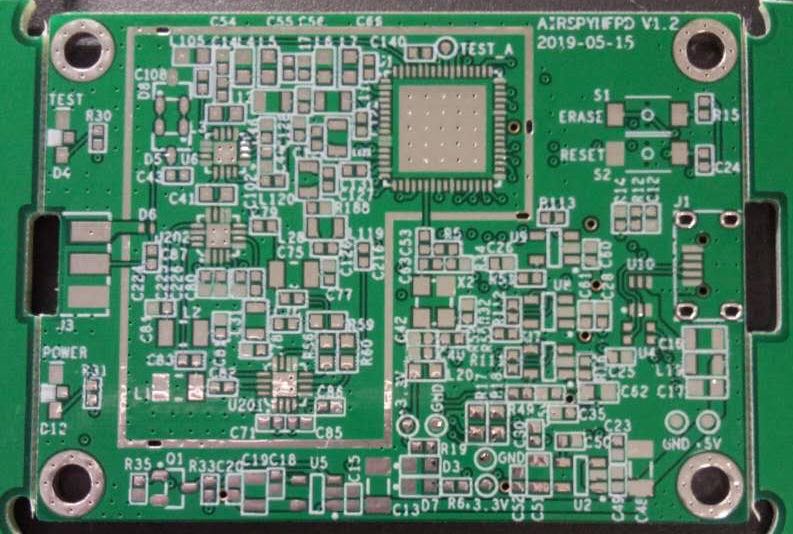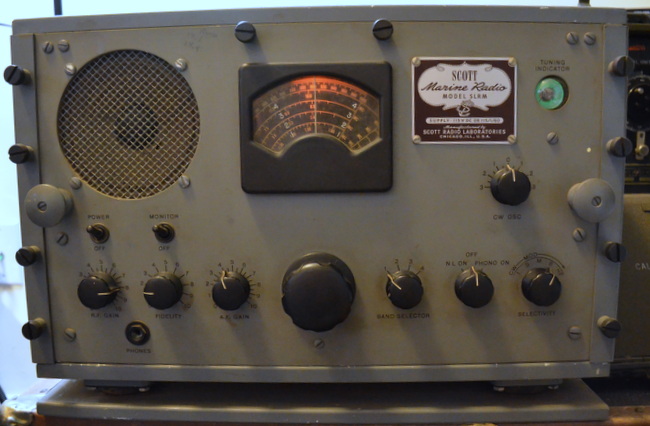Each year at the Dayton Hamvention I enjoy checking out the latest radio products and services. This year (2019) I found an exceptional number of innovations and will share these in Hamvention Highlights posts. If you would like to check out 2019 Hamvention Highlights as I publish them, bookmark this tag: 2019 Hamvention Highlights
The Ten-Tec OMNI VII+
The Ten-Tec booth had more activity this year than I’ve seen in many years. The company is certainly showing signs of entering proper production again and innovating.
According to the T-T representative I spoke with at Hamvention, the company’s focus is on improving/upgrading many of their legacy products like the Eagle, Argonaut, 100 Watt Amplifier, and the OMNI VII. Iterative improvements will eventually be made to the full product line. Upgraded gear will have an added “plus” to the model name.
Ten-Tec’s featured model at Hamvention was the OMNI VII+—their flagship transceiver.
According to the Ten-Tec website, pricing starts at $2,699 US ($3,078 US configured with an internal ATU) and there are a number of units in stock, ready to ship.
The new OMNI VII+ Features (via the Ten-Tec website):
- NEW! the 588+ has an All aluminum front face, side feet and side carry handle.
- NEW! dedicated rear panel pan adapter output jack
- HF 6 Transmit coverage on 6 through 160 meters, 100 watts output, even on 6. General coverage receives from 500 kHz to 30 MHz continuous plus 48 to 54 MHz. SSB, CW, AM, FM, Digital modes. Dual VFOs with SPLIT and REVERSE functions.
- Full function Color Screen STN transmissive color LCD display with CFL backlight, 320 240 pixels.
- Legendary QSK CW includes adjustable rise and decay times. User adjustable at the touch of a knob for hard or soft keying according to your taste. Built-in keyer can be used in Curtis A or B modes, adjustable 5 63 WPM.
- 17 selectable transmit bandwidths from 1000 4000 Hz. DSP generated to give your SSB audio a well-rounded sound tailored to your voice characteristics. A low-frequency roll off provides further control.
- RX EQ and TX EQ in 6 dB octave filters selectable in 1 dB steps from high pitched at minus 20 dB to essentially flat response at 0 dB to bassy at plus 20 dB.
- DSP Noise Reduction, automatic notch, and manual notch reduces interference from undesired carriers and random noise. Manual notch range 20 4000 Hz center, 10 300 Hz width, gt 50 dB rejection.
- Band Sweep gives you a snapshot of the entire band in seconds. Find the pileups or scout for a clear spot automatically without touching the tuning knob.
- Broad range Auto Tuner identical tuner as used in the ORION II, matches most antennas up to 10 1 SWR HF only. 100 Tune Memories. Order your OMNI VII with or without this option.
- Three antenna connectors Two SO 239 transceiver outputs, plus a third SO 239 connector for auxiliary receive only antenna. Antenna switching is front panel selectable.
- Updates by Flash ROM Serial port interface for local rig control via PC and for Flash ROM updates available via the Internet. Commands are a superset of those used for the Jupiter. To obtain the very latest version of the OMNI VII, visit our firmware download the software below. Connect the radio to a serial port on your PC and you are up to date in a flash. Easy!
- Quad band-stacking registers and 100 memories
- Optional Model 302R remote encoder keypad works with the OMNI VII. Plug it in and control selected features sitting back in your easy chair.
- Aluminum chassis construction and steel outer case makes the rig an easy traveler at only 5 inches H x 12 inches W x 14.75 inches D. Weighs just 14 pounds
- 8 pin mic connector
- 70 MHz IF up conversion
- 455 kHz 2nd IF with Collins Mechanical filters
One of the unique features of the OMNI VII+ is that it sports Collins mechanical filters—likely the only modern transceiver that can make this claim.
I’m happy to see that Ten-Tec is innovating and manufacturing again. Certainly a highlight from the 2019 Hamvention!
If you would like to follow other Hamvention Highlights, bookmark the tag: 2019 Hamvention Highlights
Click here to check out the Ten-Tec website.
Do you enjoy the SWLing Post?
Please consider supporting us via Patreon or our Coffee Fund!
Your support makes articles like this one possible. Thank you!

